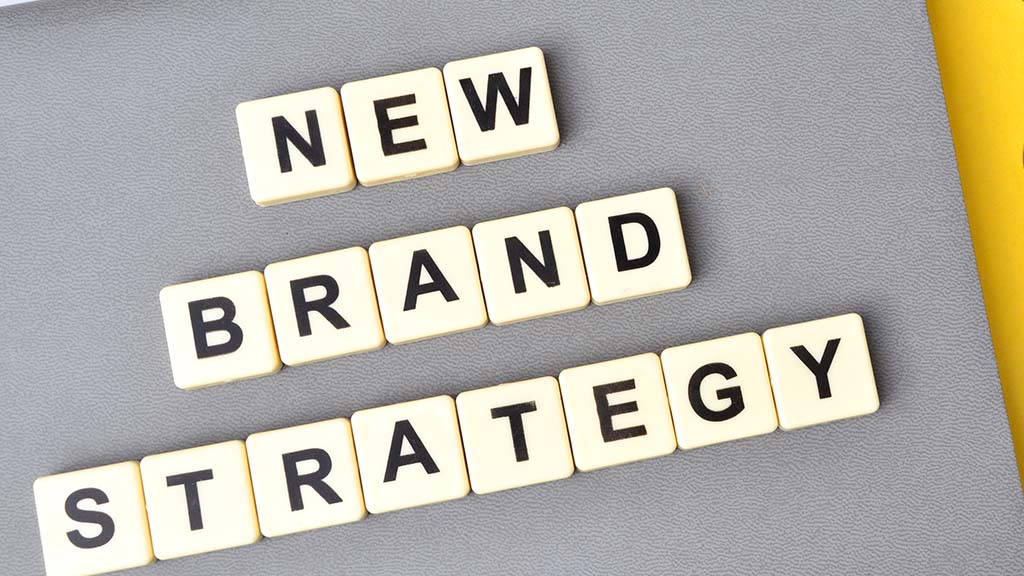How to Develop a Brand Strategy That Drives Business Success
Before you build a brand that resonates with customers and drives measurable growth, you need to establish a clear purpose and long-term vision. These aren’t just abstract ideas—they’re the foundation of every successful brand strategy. Your brand purpose answers the essential “why” behind your business: why you exist, who you’re here to serve, and what impact you want to make in the world. This purpose creates emotional meaning and helps your brand feel more human to your audience.
Your vision, on the other hand, is your brand’s north star. It paints a picture of the future you’re working toward and guides the direction of your business decisions, marketing, and messaging. When purpose and vision are aligned, you give your brand a sense of focus and ambition that customers can rally behind—and that your team can align around internally.
A strong purpose also sets the tone for brand storytelling. It informs how you connect with people emotionally, how you differentiate from competitors, and how you build loyalty. Businesses that lead with purpose are more likely to create long-term, meaningful relationships with their audience. They attract customers not just with what they sell, but with what they stand for.
Without a clear purpose and vision, your brand can feel scattered or shallow. It becomes harder to make strategic decisions, and even harder to build lasting emotional connections. That’s why this step should never be rushed—it lays the groundwork for everything that follows in your brand strategy.
Identify and Understand Your Target Audience
Once your purpose is defined, the next step is knowing exactly who you’re trying to reach. Your brand can’t speak to everyone, and trying to appeal to a broad, undefined audience is one of the fastest ways to water down your message. Effective brand strategy starts with a deep understanding of your ideal customer—their needs, goals, values, and behavior.
Start by developing detailed audience personas. Go beyond age and location—dig into what motivates your audience, what challenges they face, and what they’re really looking for in a brand. Are they price-sensitive or value-driven? Do they seek convenience, community, or credibility? What platforms do they use, and what kind of content grabs their attention?
The better you understand your audience, the more effectively you can craft messaging, design experiences, and deliver value in a way that truly resonates. And it’s not just about making a good impression. When your audience feels understood, they’re more likely to trust your brand, buy from you, and become long-term advocates.
Audience research should be ongoing. Consumer behavior changes quickly, and your brand needs to evolve with it. Surveys, social listening, customer feedback, and even one-on-one conversations can all offer valuable insights into what your audience really wants—and how your brand can better serve them.
This clarity helps you make smarter decisions about your marketing, product development, and customer experience. It also helps ensure that every part of your brand strategy is grounded in empathy and relevance—not guesswork.
Conduct a Competitive Analysis
Even the best brand strategies don’t exist in a vacuum. To position your business effectively, you need to understand the landscape you’re competing in. A competitive analysis helps you identify the strengths, weaknesses, and positioning of other brands in your industry so you can find a unique space to occupy.
Start by looking at your direct and indirect competitors. What’s their visual identity like? How do they communicate their value proposition? What kind of tone do they use in their messaging? Where are they strong—and where are they missing the mark? This research helps you see what’s working in your space, and more importantly, where you can do something different.
Your goal isn’t to copy competitors—it’s to spot opportunities for differentiation. Maybe there’s a tone of voice no one’s using yet. Maybe you can stand out with a more transparent brand story, a more modern visual identity, or a bolder point of view. These insights are incredibly valuable in shaping a strategy that doesn’t just blend in, but clearly communicates why your brand is the better choice.
This is also where working with professional branding services can be a game-changer. Experienced strategists know how to translate competitive insights into actionable positioning that sets your brand apart. Instead of reacting to what others are doing, you can lead with clarity, confidence, and a strategy designed to drive long-term business success.
Establish a Unique Value Proposition (UVP)
At the heart of every effective brand strategy is a clearly defined Unique Value Proposition. Your UVP is the answer to one of the most important questions in marketing: “Why should someone choose you over anyone else?” It communicates what makes your brand different—and why that difference matters to your target audience.
A strong UVP isn’t about listing product features. It’s about identifying the specific benefits you deliver and the emotional connection you create. Your UVP should highlight the value customers receive from working with you, the problem you solve better than anyone else, and what experience they can expect that they won’t get from competitors. It should be simple, relevant, and memorable.
For example, two fitness brands might offer similar services, but one positions itself around fast results for busy professionals while the other emphasizes holistic wellness and mental health. Their services may overlap, but the UVPs are distinct—and designed to resonate with different types of customers.
Your UVP serves as a filter for decision-making. It influences your messaging, marketing campaigns, service design, and even customer experience. It also helps your team stay focused on what makes your brand special, so you’re not chasing trends or mimicking competitors.
If you’re unsure how to articulate your UVP, revisit your customer research. What do your best customers value most? What words do they use to describe your brand? Those insights can guide you toward the kind of clarity that leads to connection—and ultimately, conversion.
Define Your Brand Personality and Voice
Your brand is more than just a product or service—it’s a personality. How your brand speaks, acts, and shows up in the world has a direct impact on how people feel about it. Defining a consistent personality and voice makes your brand relatable, memorable, and trustworthy.
Start by thinking about your brand as a character. Is it bold and rebellious? Friendly and playful? Sophisticated and authoritative? The goal isn’t to appeal to everyone—it’s to express a specific personality that aligns with your values and resonates with your audience. This personality should influence how you write copy, design graphics, respond to customers, and interact on social media.
Your brand voice is the expression of that personality through language. It includes tone, vocabulary, sentence structure, and rhythm. A luxury skincare brand might use polished, elegant language, while a direct-to-consumer snack brand might take a cheeky, irreverent tone. The key is to keep it consistent so your audience always knows what to expect from you.
When your brand voice is inconsistent—or worse, nonexistent—your messaging feels disjointed and forgettable. But when your voice is well-defined and consistent, it creates a sense of familiarity that builds trust over time.
To solidify your brand personality and voice, document it. Include voice principles, tone examples for different scenarios, and “do’s and don’ts” to guide your team. This becomes your brand’s communication playbook—especially useful when onboarding new team members or working with external creatives.
Develop Core Brand Messaging
Once you’ve defined your UVP, personality, and voice, it’s time to bring everything together through core brand messaging. These are the foundational statements and themes that shape how you talk about your brand across every channel—website, social media, ads, presentations, email, and more.
Start with your brand story. Why did you start your business? What do you stand for? What transformation do you offer? Your story should go beyond a timeline of events—it should express your mission, connect with your audience emotionally, and position your brand as the guide that helps customers achieve something meaningful.
Next, create messaging pillars—key ideas or themes that reflect your brand values and communicate your UVP. These pillars help keep your content focused and consistent, even as you speak to different customer segments or adapt to different platforms.
Finally, write a strong tagline or positioning statement that clearly communicates what you do and why it matters. This should be short, compelling, and aligned with your brand voice.
When your messaging is aligned with your personality, audience, and value proposition, it becomes a powerful tool for connection. People won’t just understand what your brand offers—they’ll remember how it made them feel. And that’s what drives business success.
Design a Cohesive Visual Identity
Your visual identity is more than just your logo—it’s the visual language that tells your audience who you are, before they even read a word. It includes your color palette, typography, imagery, iconography, and layout design across all brand touchpoints. When done right, it becomes a powerful shorthand that instantly communicates your brand’s personality, tone, and values.
A cohesive visual identity creates consistency, which builds recognition and trust. Whether someone encounters your brand on Instagram, your website, a billboard, or a product label, the experience should feel seamless. Your audience should know it’s you—not because they see your name, but because your design elements are so aligned with your brand personality that they’re instantly recognizable.
When businesses overlook this step or treat design as an afterthought, their branding often feels disconnected and unprofessional. This can lead to a fragmented experience where each platform looks like it’s managed by a different team—and that inconsistency can confuse customers or make your brand seem less credible.
To develop a strong visual identity, start with your brand strategy. Your design choices should reflect your brand personality, appeal to your target audience, and support your unique value proposition. A minimalist tech company may lean into clean lines and neutral tones, while a wellness brand might use soft, earthy hues and calming fonts.
Once established, document your visual identity in brand guidelines. These guidelines should include instructions on logo usage, brand colors, fonts, photography style, and layout rules. This ensures that everyone—from your internal team to outside vendors—can maintain visual consistency no matter where your brand shows up.
Align Your Brand Internally
A brand is only as strong as the people behind it. For your brand strategy to truly drive business success, it needs to be embraced and understood by your entire team. That’s why internal brand alignment is just as important as what your customers see.
When your employees understand your brand’s mission, voice, values, and positioning, they can communicate more effectively, deliver better service, and make decisions that reflect the brand’s goals. This creates a more unified experience for your customers and a stronger brand culture behind the scenes.
Start by introducing your brand strategy to your team with intention. Share your purpose, vision, target audience, and messaging pillars—not just as abstract ideas, but as tools they can use to guide their work. Explain why certain visual choices were made, or why your tone of voice matters, so they feel invested in the strategy rather than just expected to follow rules.
Training sessions, internal documentation, and even brand workshops can help reinforce alignment. When your team can confidently articulate what your brand stands for and how it should show up, they become brand ambassadors—whether they’re designing, selling, hiring, or supporting customers.
Internal alignment also leads to stronger culture and morale. When people feel like they’re working toward a shared purpose and representing something meaningful, they’re more engaged—and that passion translates into better customer experiences and long-term loyalty.
Implement Across All Customer Touchpoints
Once your strategy is built and your team is aligned, it’s time to bring it to life—consistently and intentionally—across every single customer touchpoint. Your brand doesn’t just exist on your homepage or in your logo. It exists everywhere your audience interacts with you: your website, social media, product packaging, ads, emails, customer service conversations, onboarding flows, and more.
Each of these touchpoints should reinforce your brand identity and feel like part of one cohesive experience. Your tone of voice, visuals, and messaging should all be aligned, whether someone is reading a blog post or receiving a follow-up email after a purchase.
Start by auditing all the ways people engage with your business. Is your Instagram voice as strong and consistent as your website? Does your customer service team reflect your brand personality in their communication? Does your packaging design match the feel of your online presence?
Make adjustments where needed to close the gaps. A truly effective brand strategy isn’t just about launching a new logo or tagline—it’s about building a consistent, seamless journey that builds trust and strengthens relationships at every stage.
The more aligned your customer experience is with your brand strategy, the more your audience will feel like they “get” your brand—and that sense of clarity and cohesion makes it much easier for them to trust you, buy from you, and become long-term fans.
Measure, Refine, and Evolve
Brand strategy isn’t a one-and-done project—it’s an ongoing process that should evolve as your business grows, your market shifts, and your audience’s needs change. That’s why measurement and refinement are essential steps in building a brand that drives long-term business success.
Start by identifying key metrics that align with your goals. These could include brand awareness, engagement rates, customer retention, Net Promoter Score (NPS), or conversion rates. You can also gather qualitative insights through customer surveys, social listening, and direct feedback. What are people saying about your brand? Do they understand what you stand for? Are they emotionally connecting with your message?
Use this data to evaluate what’s working—and what’s not. Maybe your new visual identity is increasing engagement on Instagram, but your website bounce rate is still high. Or maybe your brand story resonates with one audience segment but not another. These insights give you the power to make informed decisions and fine-tune your approach.
Don’t be afraid to evolve your brand as needed. Refinement doesn’t mean inconsistency—it means staying responsive and intentional. Even the most iconic brands in the world have updated their visuals, messaging, and positioning to stay aligned with their audience and mission.
A successful brand strategy is rooted in clarity but fueled by adaptability. When you consistently measure, refine, and align your brand with your business goals and customer needs, you build a foundation that drives real growth—and stands the test of time.

















